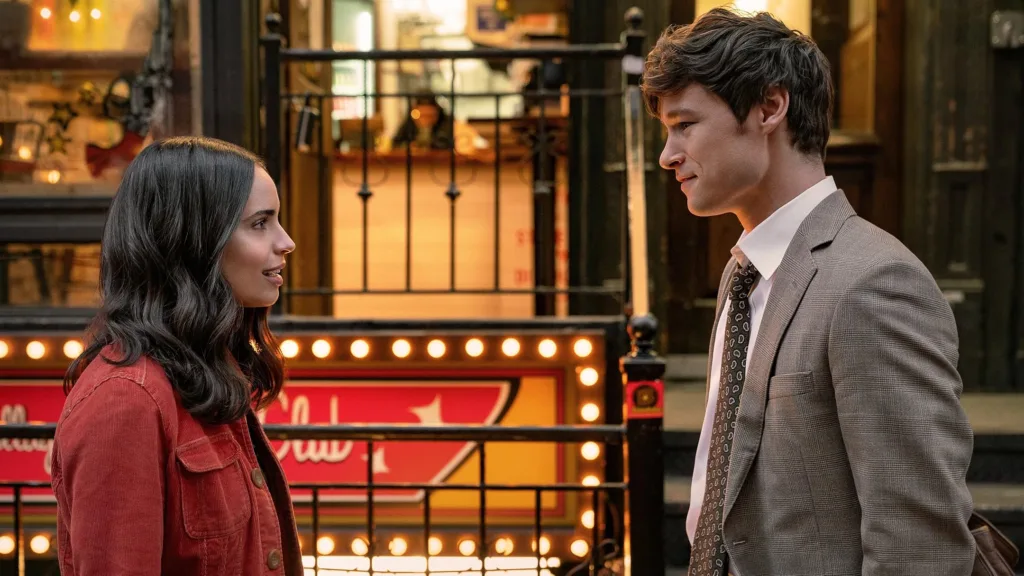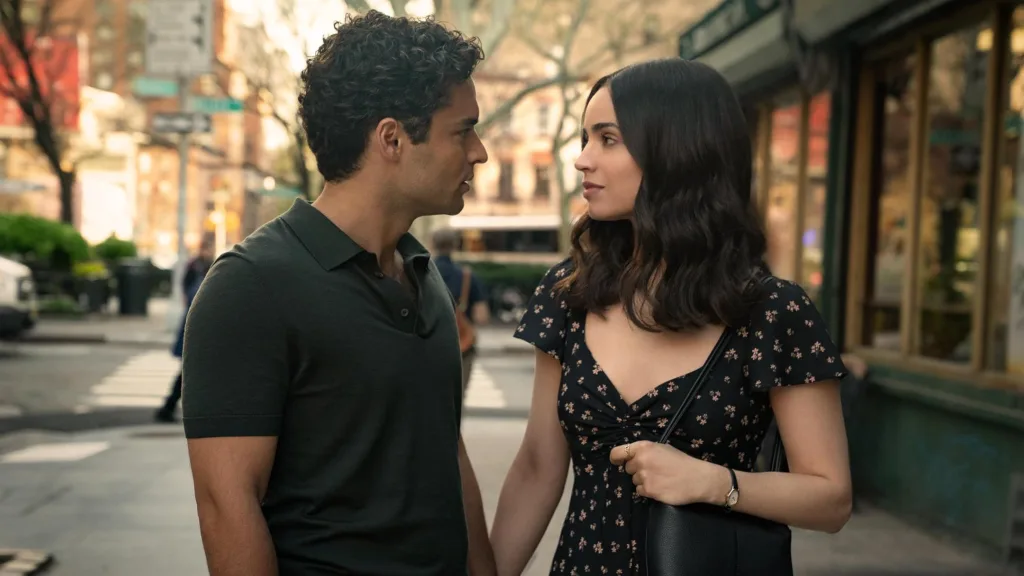Alex finds herself confronted with a challenge that seems born from the very fabric of her unfulfilled past—a directive from a mother now departed, etched into the recesses of childhood ambition. In this film, the heartache of loss is measured by the simplicity of a list, written when the promise of youth shone brightly.
The narrative follows a woman whose teacher days have faded, leaving her to wander through the corridors of a corporate empire built by her mother. This loss fractures her world, setting her adrift between the comfort of familiar routines and the uncharted territories of forgotten dreams.
The film shifts the expected inheritance from a seamless takeover to a test of character: a series of tasks ranging from the whimsically light to the profoundly personal, each designed to peel away layers of accumulated sorrow and resignation.
The blend of tender humor with earnest romance casts a glow over a tale that questions the weight of responsibility against the yearning for liberation. As the “life list” unfolds, every completed task becomes an echo of a past self, urging an introspective confrontation with desires long left unexplored. Here, the screen becomes a mirror reflecting a struggle that is as existential as it is intimate.
Mortal Reflections and Imperfect Mirrors
In the shifting chiaroscuro of Alex’s character, one senses echoes of a self long abandoned. Once caught in a state of disquiet and disconnected from the dreams of youth, she now appears as an individual stirring from the depths of a forgotten past. Memories of a time when hope shone fiercely and innocence danced in carefree moments linger like half-remembered verses. Each hesitant step forward unmasks fragments of an identity rediscovered, the weight of grief and the specter of self-doubt mingling with sparks of rebellious vitality.
Her late mother, speaking through recorded messages that hover in the ether of memory, provides guidance that is both a tender caress and an unyielding challenge. In the silent intervals between these digital whispers, tension with her father emerges—a quiet discord etched in the lines of shared loss and unspoken reproach.
Among the figures orbiting her troubled core, two distinct presences cast their influence: one, a gentle attorney with a smile that hints at earnest care, and another, a refined colleague whose measured composure suggests depths yet uncharted. Their presences, though echoing familiar roles, awaken in Alex a desperate longing for connection, an unspoken plea to find a mirror for her inner disquiet.
Supporting figures add touches of humor and subtle solace amid the pervasive melancholy. Friends, siblings, and unexpected companions provide fleeting moments of warmth, brief respites from the relentless pursuit of self-reclamation. Sofia Carson’s portrayal of Alex reveals a spirit both fragile and determined, unmasking vulnerabilities without succumbing to easy sentiment.
Connie Britton exudes a dignified sorrow, her performance a quiet beacon amid the shadows of loss. Interactions between these souls create a living canvas where each glance and silent exchange questions the nature of existence, leaving an indelible mark on the search for meaning.
Existential Whispers and the Weight of Memory
Alex’s pursuit of a forgotten ledger of youthful aspirations unfolds as a silent hymn to lost dreams. The list, a relic of innocent hope, becomes an instrument for reawakening passions long submerged beneath the detritus of everyday burdens.
Her quest signals a confrontation with a past self that dared to dream without restraint, each task echoing the latent call for meaning that once defined her existence. Here, the act of checking off an item transcends mere action; it transforms into a ritual that challenges the stasis of regret and invites a reconsideration of personal ambition.
The film renders grief as a tangled, non-linear tapestry—a chiaroscuro of fleeting clarity and perpetual uncertainty. The passing of Alex’s mother instigates this internal metamorphosis, its reverberations touching every facet of her being.
The recorded messages from beyond act as both guide and ghost, stirring memories that are as tender as they are shattering. Within the silent spaces left by her loss, the complex interplay of duty and desire surfaces, revealing a character caught in the throes of reconciling what was with what might yet be.
Family ties are recast as symbols of identity, where the promised inheritance transcends material worth and speaks to the deep-seated need for self-affirmation. The strained conversation between father and daughter unfolds as a quiet struggle against inherited expectations, while the presence of two contrasting suitors casts reflections of vulnerability and longing.
Their roles, set against the backdrop of familial legacy and the relentless pull of societal expectations, expose the fragility inherent in seeking solace through external validation. In this textured space, the pursuit of love intermingles with the search for inner truth, each moment underscored by a persistent questioning of what it means to be truly fulfilled.
Reflections in Light and Shadow
New York City emerges as a living canvas, its urban contours and vibrant districts reflecting the inner shifts of Alex’s state of mind. The film situates her in the electric pulse of Manhattan and the eclectic energy of Brooklyn, using these spaces to mirror her own internal oscillations.
In dimly lit corners and expansive skylines, the camera lingers on the interplay of illumination and obscurity, capturing moments when warmth softens isolation. Soft dissolves and montage sequences mark transitions in her mood—each fade a quiet punctuation in an otherwise relentless chronicle of self-reclamation.
The score plays a pivotal role, its nostalgic strains mingling with modern cadences to evoke an atmosphere that is both haunting and strangely familiar. Certain scenes are underscored by music that punctuates the quiet intensity of reflection, while other sequences find humor in the gentle interplay of sound and silence. Pre-recorded DVD messages serve as turning points within the narrative, their static clarity bridging the chasm between past guidance and present struggle.
Every prop, from the handwritten life list to the carefully chosen set pieces, speaks to an aesthetic commitment that enriches the film’s visual poetry. Mirrors and windows appear repeatedly, symbols of introspection and the quest for self-recognition. These visual motifs transform the screen into a series of reflective surfaces, where light and shadow converse in silent, measured tones, hinting at the unspoken truths lying beneath the surface of a life in flux.
The Art of Fragmented Storytelling
The film’s narrative unfolds like a mosaic—each shard a reflection of a deeper inquiry into the self. It balances the quest for inner rediscovery with a romantic subplot, neither narrative overshadowing the other but instead coexisting in a fragile equilibrium.
The story is carved into distinct phases: an inciting challenge that thrusts Alex into an unexpected trial, a mid-course of introspection where her past converges with the present, and a culmination marked by tentative revelations. Each phase builds upon its predecessor, echoing the persistence of a truth that is as elusive as it is inevitable.
The “life list” operates as both a framework and a silent mentor, its items oscillating between the mundane and the profoundly transformative. Each task on the list serves as a milestone—a symbolic gesture that encapsulates the tension between trivial pursuits and the arduous journey toward self-realization.
Interwoven flashbacks punctuate the narrative, juxtaposing faded dreams with current struggles. These interludes, though sporadic, enrich the film’s texture by reminding us of who Alex once was and who she might yet become, even as they stir an undercurrent of uncertainty.
Dialogue often sparkles with moments that are both bittersweet and laden with philosophical weight, capturing the ephemeral quality of hope amid despair. Interactions between characters, while occasionally predictable, nonetheless contribute to the unfolding layers of Alex’s internal evolution. Secondary narratives, such as the murmurs of hidden family secrets, are not merely distractions; they are subtle accents that lend the story a resonant complexity.
Embers of Reflection
This film reveals an inner odyssey that compels us to confront the silent forces shaping our identities. It casts a stark light on the fragile interplay between personal loss and the fierce, sometimes painful, urge to reclaim a self once shrouded in youthful dreams.
The narrative confronts us with a ritual—a list crafted in innocence—that awakens dormant aspirations and challenges the stasis of everyday disillusionment. Here, the encounter with grief is rendered as a raw, unpredictable force, its echoes mingling with moments of unexpected mirth and piercing hope.
In portraying the arduous path toward self-renewal, the film suggests that each hardship is not merely an obstacle but a subtle invitation to explore the contours of our inner lives. The delicate balance of humor, sorrow, and gentle defiance calls forth reflections on the impermanence of certainty and the elusive nature of fulfillment.
The story quietly persuades its audience to turn inward, to sift through the remnants of forgotten desires, and to embrace the mutability that defines human existence. This unfolding narrative stands as a contemplative mirror, urging us to question whether the pursuit of change can kindle the ember of a self that is ever in flux, forever seeking its elusive form.
The Review
The Life List
This film emerges as an introspective exploration of loss and self-rediscovery, capturing a nuanced interplay between humor and sorrow. Its measured storytelling and visual poetry create a reflective atmosphere that lingers long after the credits roll. Certain narrative choices may feel familiar, yet the existential queries posed invite quiet contemplation and personal reckoning. It offers a thought-provoking experience that quietly challenges viewers to confront their inner depths.
PROS
- Poignant exploration of personal growth and loss
- Reflective narrative that invites introspection
- Effective use of visual motifs and urban settings
- Nuanced performances that evoke quiet emotional depth
CONS
- Predictable romantic subplot can feel formulaic
- Pacing may be uneven at times
- Over-reliance on familiar narrative devices
- Some transitions feel less organic




















































